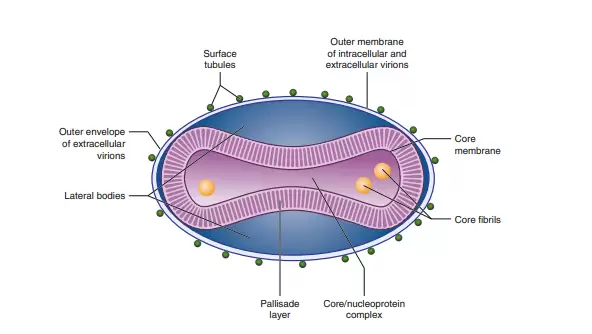Did you know that nearly 3 million workers are injured on the job every year in the United States? Understanding the roles of key organizations like the National Institute for Occupational Safety and Health (NIOSH) and the Occupational Safety and Health Administration (OSHA) can make a crucial difference in preventing these incidents in the workplace. This article aims to provide you with a brief overview of both organizations while highlighting their unique yet complementary functions in promoting workplace safety and health.
Cashins & Associates : Resources
Understanding Workplace Safety: The Roles of NIOSH and OSHA
NIOSH and OSHA: Two Safety and Health Agencies - Discover Their Differences


What is NIOSH? (National Institute for Occupational Safety and Health | NIOSH | CDC)
NIOSH was established in 1970 under the Occupational Safety and Health Act. NIOSH was created in response to the growing concerns about workplace safety amid rising industrialization and increasing workplace injuries and fatalities during the mid-20th century. This act aimed to ensure that all American workers had safe and healthy working conditions. NIOSH functions as a research agency under the Centers for Disease Control and Prevention (CDC), focusing on conducting scientific research, developing recommendations, and providing education aimed at preventing work-related injuries and illnesses.
NIOSH engages in extensive epidemiological studies and industrial hygiene assessments to identify workplace hazards and understand the long-term health effects of occupational exposures. For instance, NIOSH sets Recommended Exposure Limits (RELs) for various hazardous substances, such as a REL of 0.1 mg/m³ for lead exposure over an 8-hour shift, which serves as a guideline to help protect workers from lead poisoning. Additionally, NIOSH’s Total Worker Health initiative emphasizes the integration of occupational safety with health promotion, addressing both physical and mental health in the workplace.
What is OSHA? (Home | OSHA.gov | Occupational Safety and Health Administration)
OSHA was also created by the Occupational Safety and Health Act of 1970, primarily as a regulatory body within the U.S. Department of Labor. The establishment of OSHA was driven by the urgent need for federal oversight to ensure safe and healthy working conditions in response to the alarming rates of workplace injuries and illnesses. OSHA’s mission is to save lives, prevent injuries, and protect the health of American workers through the enforcement of standards.
OSHA develops legally binding regulations across various industries, which include the General Industry Standards (29 CFR Part 1910) and Construction Standards (29 CFR Part 1926), addressing specific hazards and practices. For example, the Fall Protection Standard (29 CFR 1926.501) requires protective measures for construction workers at elevations to prevent serious injuries. OSHA also conducts inspections to enforce compliance with these standards, responding to complaints and identifying unsafe conditions in workplaces. Additionally, OSHA provides consultation services, offering free advice to small businesses to help them identify hazards and improve their safety practices without the fear of penalties.
Key Similarities
NIOSH and OSHA, while serving different functions, both play vital roles in enhancing workplace safety and health across the United States. Established by the same Occupational Safety and Health Act of 1970, they share a common mission to reduce workplace injuries and illnesses. Both organizations rely on scientific research to develop effective strategies and recommendations, ensuring that their guidelines are evidence-based. They also prioritize education and training, offering resources that help employers and employees recognize and mitigate potential workplace hazards. Additionally, both agencies are committed to fostering collaboration among stakeholders, including businesses, labor unions, and health professionals, to create safer work environments.
By aligning their efforts, NIOSH and OSHA collectively contribute to a stronger framework for occupational safety, demonstrating that effective communication and collaboration are key to protecting workers.
Key Differences
While both agencies are essential for workplace safety, there are notable differences in how they operate, particularly in their approach to standard development.
OSHA's Lengthy Process
- OSHA’s process for creating new standards can be lengthy, often involving extensive research, public comment periods, and negotiations that can take years to complete. Since the 1980s, it has taken OSHA an average of almost 8 years to put out a final rule. This slow pace can make it challenging for OSHA to respond quickly to urgent safety issues, leaving gaps in regulation during critical times.
NIOSH's Rapid Response
- In contrast, NIOSH can issue recommendations and guidelines much in a matter of months, based on its research findings, allowing organizations to adopt necessary changes immediately. For instance, if NIOSH identifies a significant risk related to a new chemical exposure, it can quickly release guidelines for employers to follow, whereas OSHA’s formal rule-making process may lag behind, delaying the establishment of enforceable standards.
Practical Steps for Employers
To effectively integrate the guidance from both NIOSH and OSHA, organizations can follow these key steps:
- Conduct a Comprehensive Assessment: Evaluate the workplace to identify potential hazards based on OSHA regulations and NIOSH recommendations.
- Develop Safety Policies: Create clear safety policies that align with both OSHA standards and NIOSH guidelines.
- Implement Training Programs: Provide training for employees on OSHA compliance and NIOSH best practices for hazard recognition and safety controls.
- Establish Reporting Mechanisms: Encourage employees to report unsafe conditions or violations without fear of retaliation.
- Utilize Resources: Access educational materials and guidelines from both OSHA and NIOSH to stay up to date on best practices and regulations.
- Monitor Effectiveness: Regularly review safety practices, conduct audits, and seek employee feedback to improve compliance and evaluate hazard control effectiveness.
By implementing these steps, organizations can enhance workplace safety and promote the health and safety of their employees while adhering to OSHA standards and NIOSH recommendations.
Conclusion
By understanding the unique strengths of NIOSH and OSHA, organizations can leverage both agencies to enhance their safety programs. NIOSH’s focus on research and rapid response complements OSHA’s regulatory framework, providing legally binding standards that protect workers. This collaborative approach creates a comprehensive strategy for workplace safety, ensuring employers can proactively protect their workers while complying with established regulations. Ultimately, the combined efforts of NIOSH and OSHA play a crucial role in creating safer work environments and promoting the health and safety of workers across various industries.
If you have inquiries regarding compliance with industry regulations, identification and mitigation of workplace hazards, or strategies for implementing effective safety practices, Cashins and Associates, Inc. is ready to assist you. Our dedicated team of professionals specializes in occupational health and safety, as well as industrial hygiene, ensuring that we provide expert guidance specifically tailored to meet the unique needs of your organization.
We understand that every workplace presents its own set of challenges and risks, which is why we take a comprehensive approach to safety consulting. Whether you require assistance with risk assessments, developing safety protocols, or training your staff on best practices, we are committed to helping you navigate these complexities.
Don’t hesitate to reach out to us with your questions or concerns—we are here to support you in fostering a safer, healthier work environment for your employees. Together, we will create a culture of safety that protects your workforce and enhances overall productivity. We look forward to partnering with you on this important journey!

A Fully Insured, Comprehensive Industrial Hygiene Consulting Firm Serving New England and Beyond.
QUICK LINKS

A Fully Insured, Comprehensive Industrial Hygiene Consulting Firm Serving New England and Beyond.
CONTACT US
781-245-1400
info@cashins.com
All Rights Reserved | Cashins & Associates Inc



